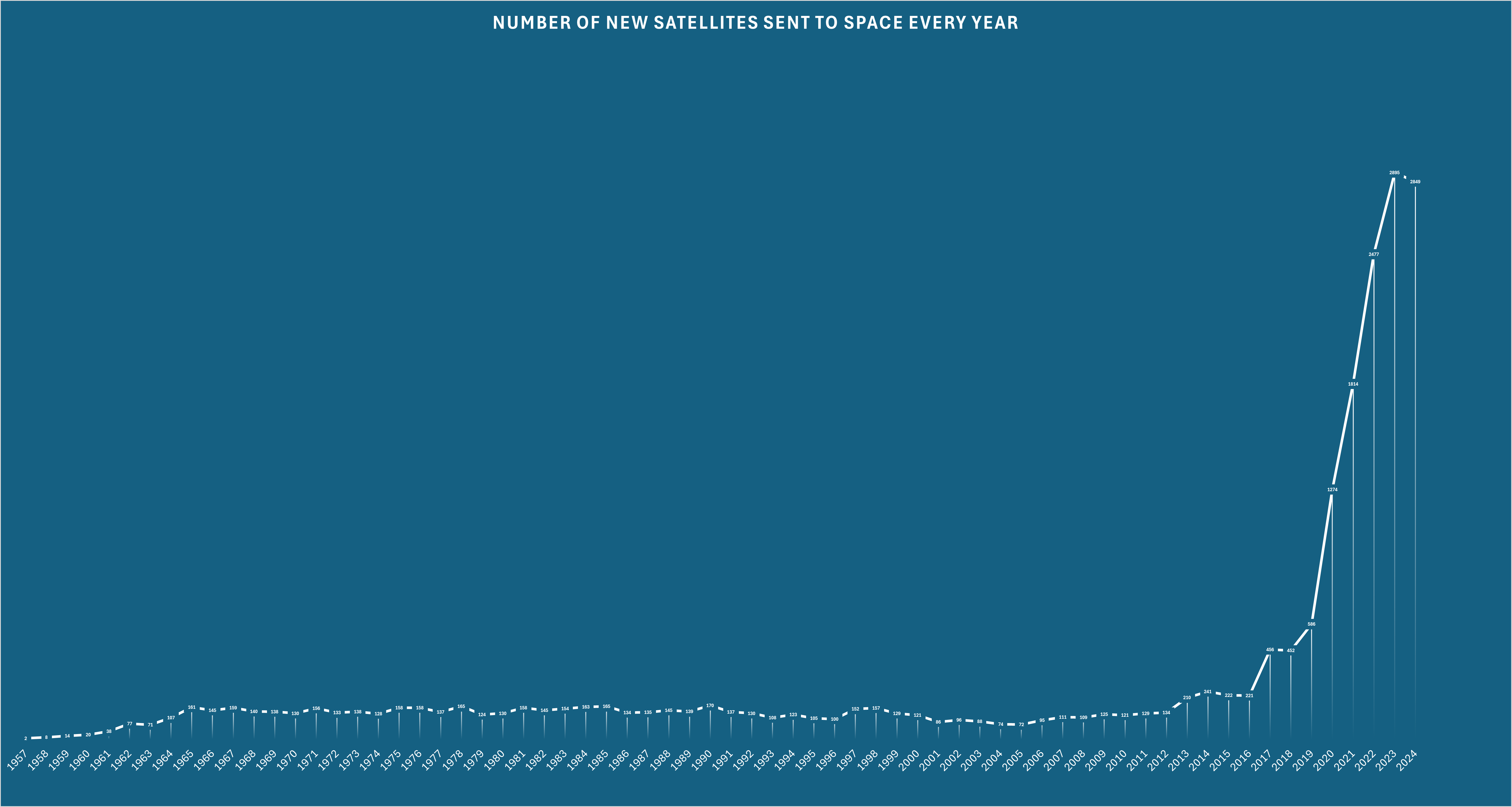Space has dramatically changed in the last decade. It is now cheaper and easier to get stuff into space, and the consequences of this space rush are not fully understood. There are environmental effects here on Earth and the risk of increasing junk in space, and the research and regulation that underpins our understanding and the safety of both environments is being slashed in the US.
Rocket launches have been, for decades, few and far between. Their pollution was something on the minds of many (with some strategies to mitigate it already in place, like for Ariane 6), but there was never such a constant stream of launches before. Just in the first four months of 2025, there have been more launches than in the whole of 2018. As of today, there are 14,932 objects in orbit. Slightly less than half, 7,236 to be exact, are Starlink satellites present in low-Earth orbit, making them by far the largest group of satellites in space.

Over the last decade, the number of satellites in space has increased massively.
Image credit: ©IFLScience
There have been some studies quantifying the pollution of launches and the potential impact of burning satellites on the higher portions of the atmosphere and the ozone layer. But it’s preliminary work and more research is needed. This is why the timing of funding cuts is the worst possible, according to nonprofit Public Employees for Environmental Responsibility (PEER).
“The sheer volume of atmospheric pollution from this satellite revolution is not on our national radar,” stated PEER Executive Director Tim Whitehouse, a former senior enforcement attorney with the US Environmental Protection Agency, said in a statement. “The need for inter-agency and international cooperation in addressing these space impacts is becoming urgent, just as the US has begun to retreat dramatically from climate science and global eco-coordination.”
PEER is not alone in this. The growing concern for what’s happening above our heads led to several experts and activists to start the Center For Space Environmentalism (CSE), whose goal is “to inspire, inform, and guide the preservation and protection of the space environment.”
There are concerns that stretch beyond the atmosphere and the Earthly environment. The higher number of satellites in space means that there is an increasing risk of collisions, which might lead to the concerning Kessler Syndrome – a scenario where collisions between satellites or space junk cause exponentially more collisions, until a whole area of space might not be traversable (there are some proposed countermeasures though).
“We’re concerned about rapid and irreversible changes to orbital space, the Moon, Mars and beyond,” said CSE co-founder John Barentine, an astronomer and principal at Dark Sky Consulting, LLC, in a statement emailed to IFLScience. “Right now there is nothing like the Center to speak up for the protection of the space environment.”
This is happening at a time when Trump and his advisor, billionaire Elon Musk, have attacked science from the get-go; cut jobs, putting Americans in danger; and proposed a budget that will devastate climate research. The conflict of interest between Musk and the administration has been highlighted several times, such as federal agencies investigating Musk’s companies becoming targets for firing and cuts by the administration.
“A huge and expanding chemistry experiment is taking place in our atmosphere while we fire the scientists needed to monitor it,” Whitehouse added. “Unfortunately, and unbelievably, the person best positioned to profit from lax satellite regulation has been put in charge of dismantling the oversight agencies and eliminating their scientific capacity.”
From weather satellites to telecommunications, most of our daily life is shaped by what goes on in space. However, we don’t yet fully understand what’s happening up there and what the consequences of this new space economy might be for our planet.
Source Link: Pollution Related To Space Is Getting Worse As Trump And Musk Target Research And Regulations